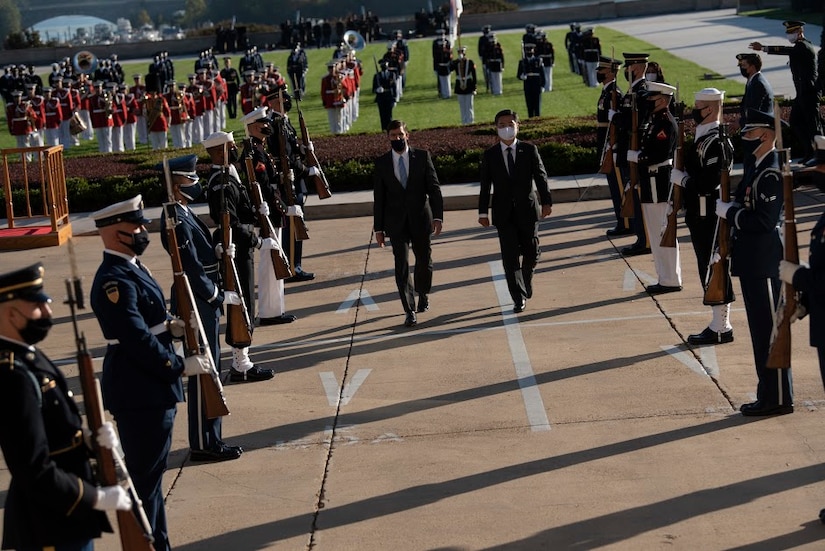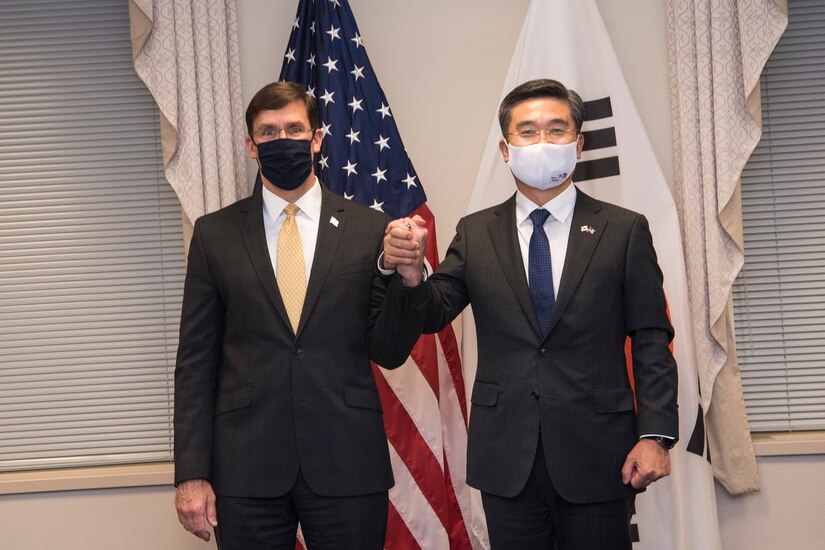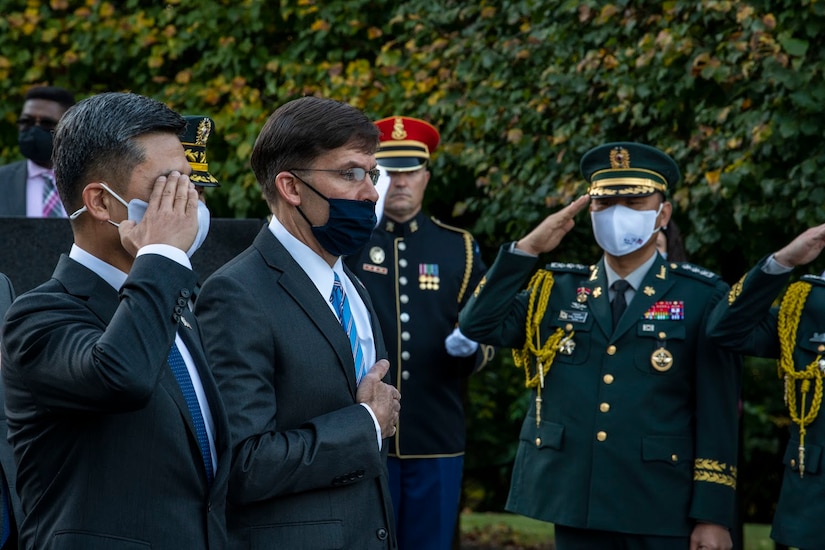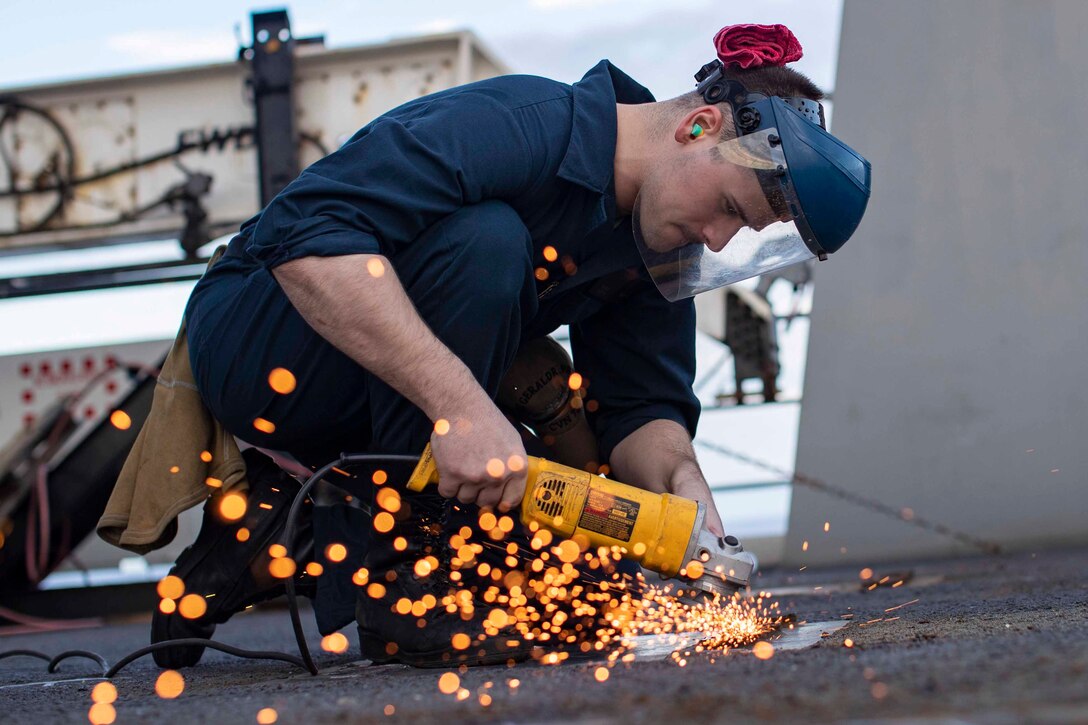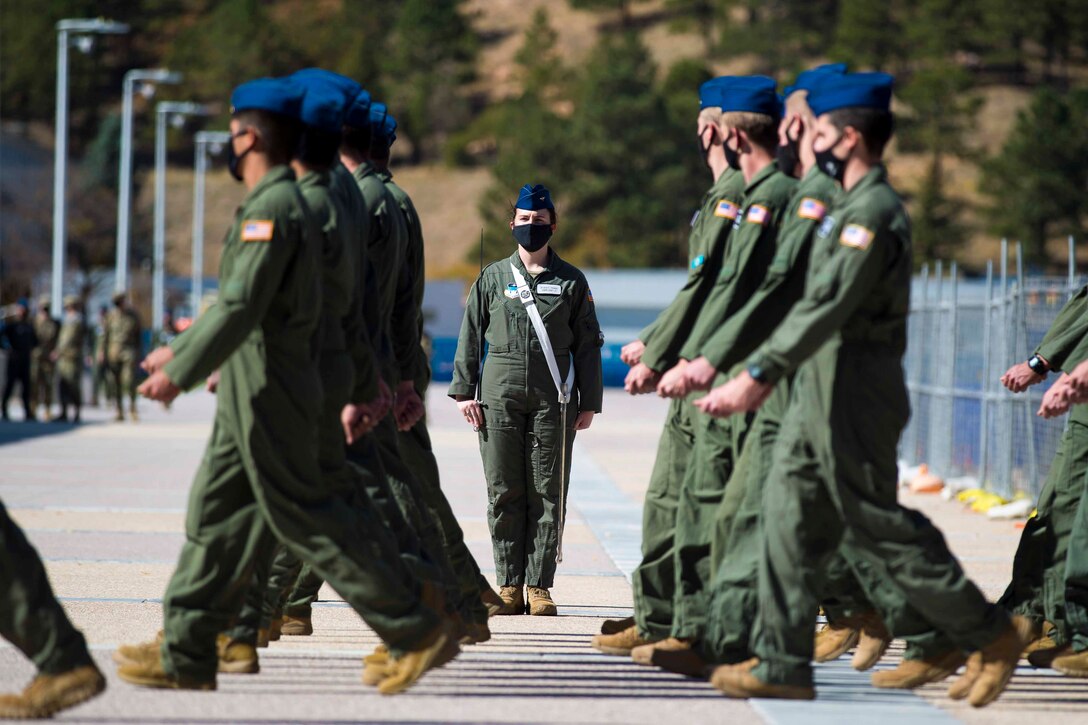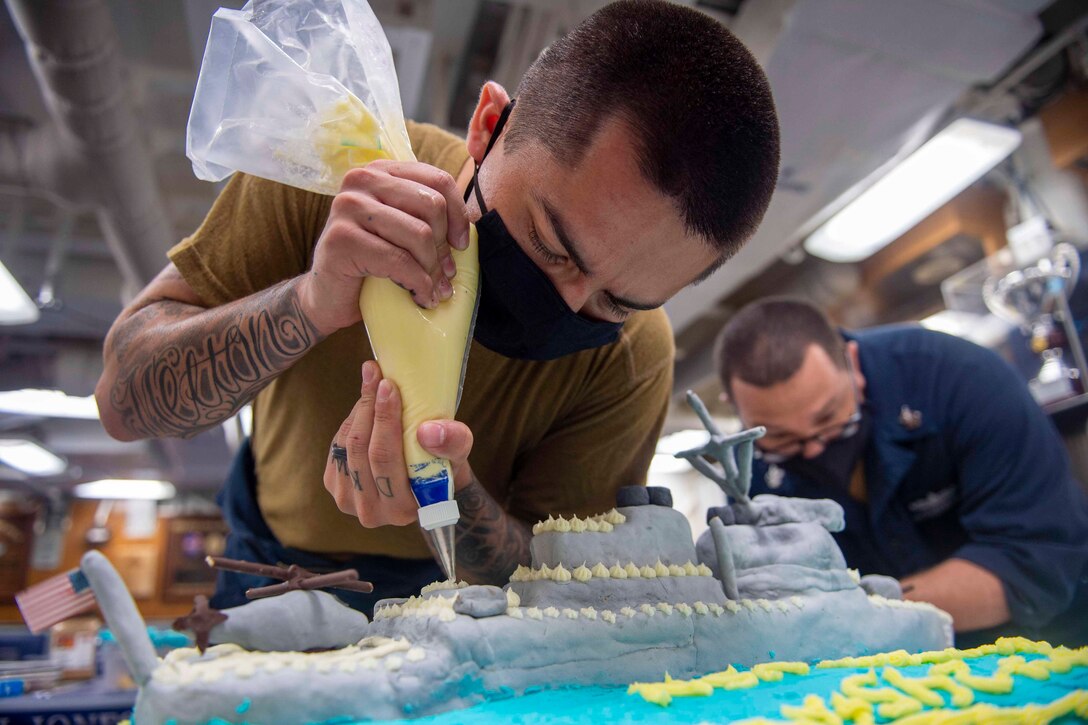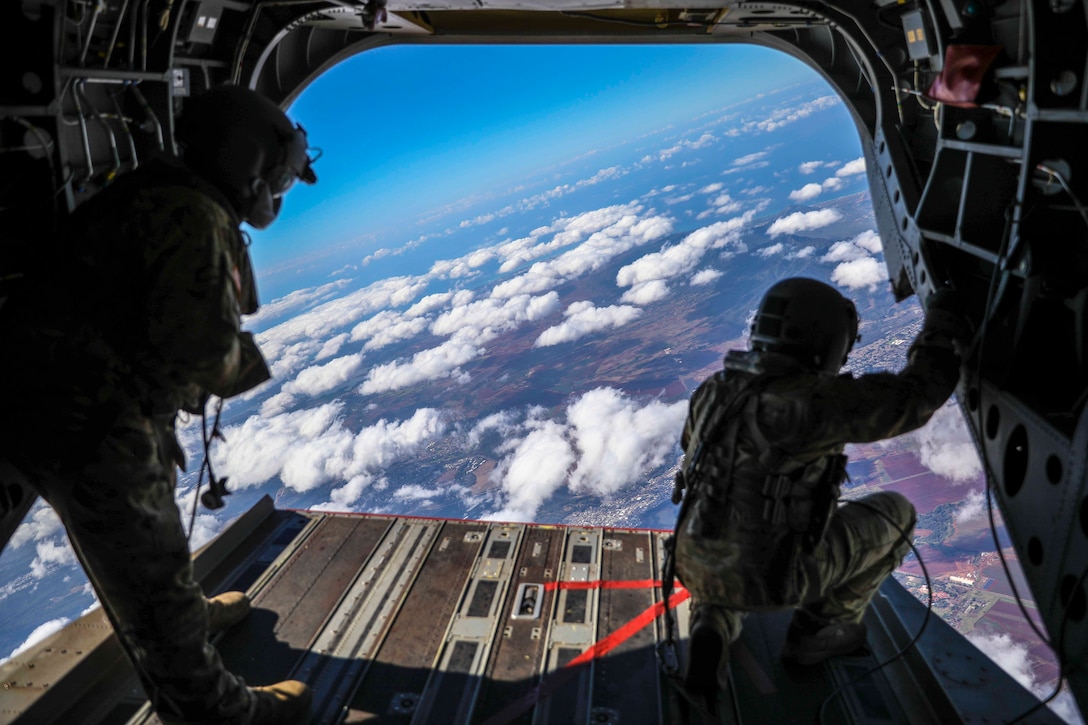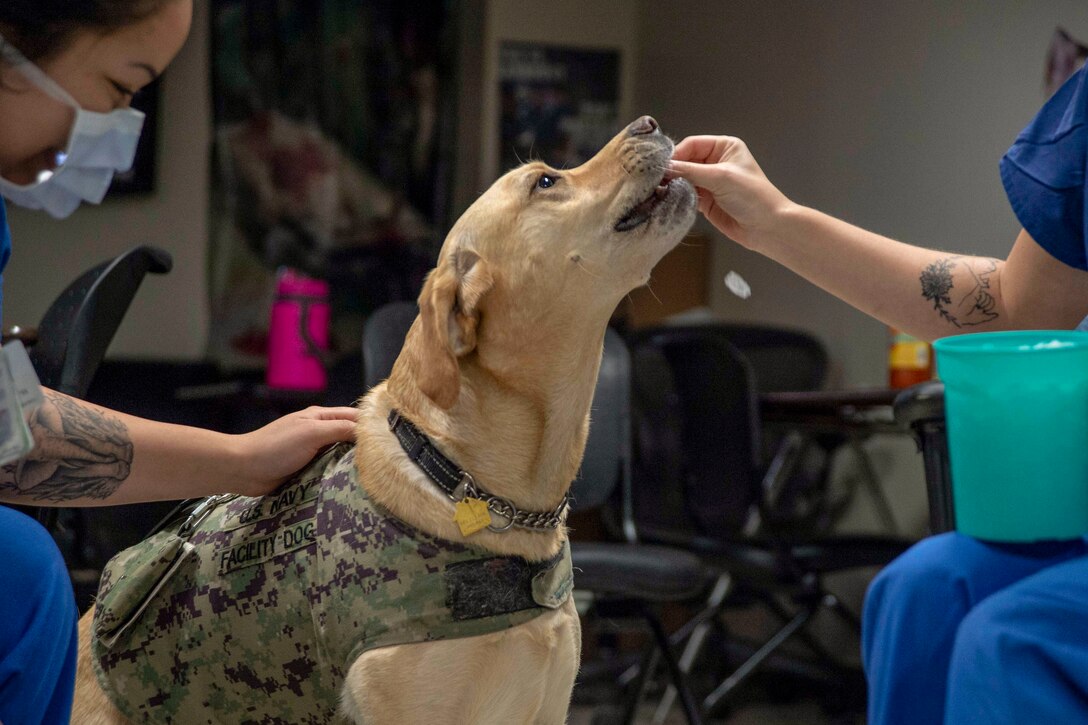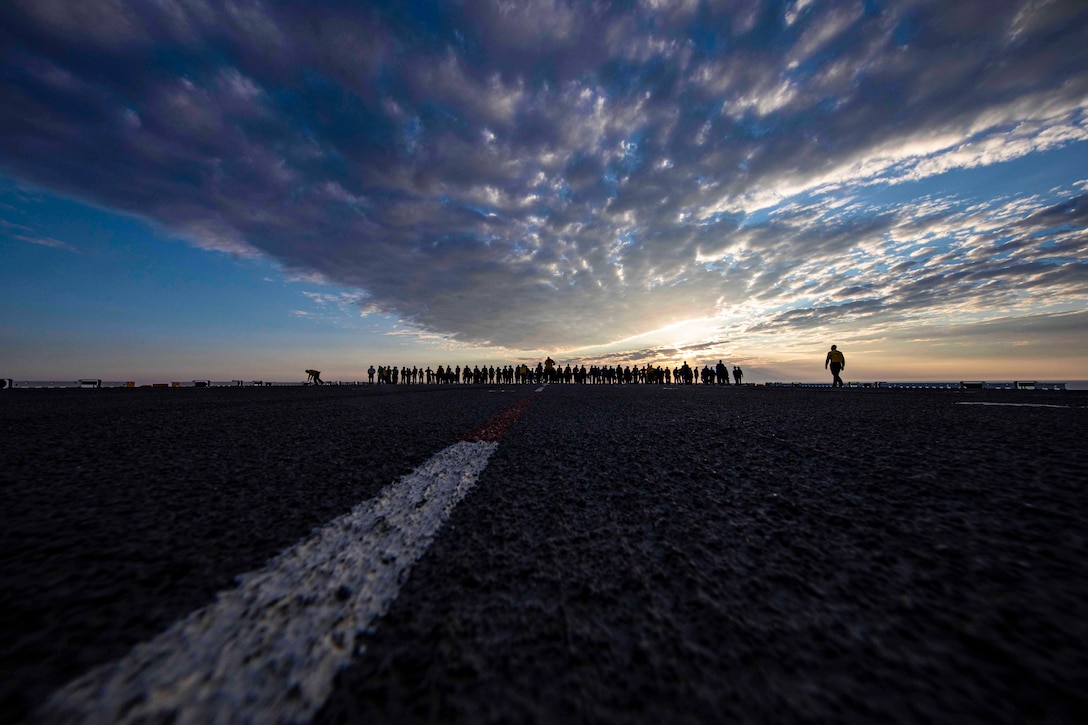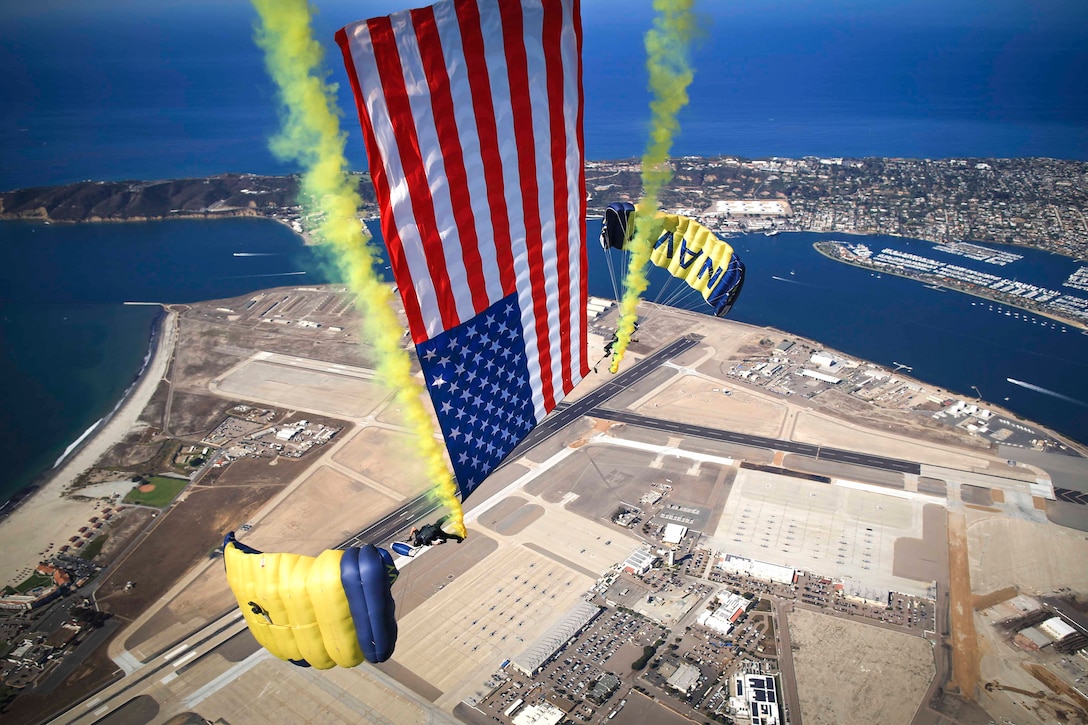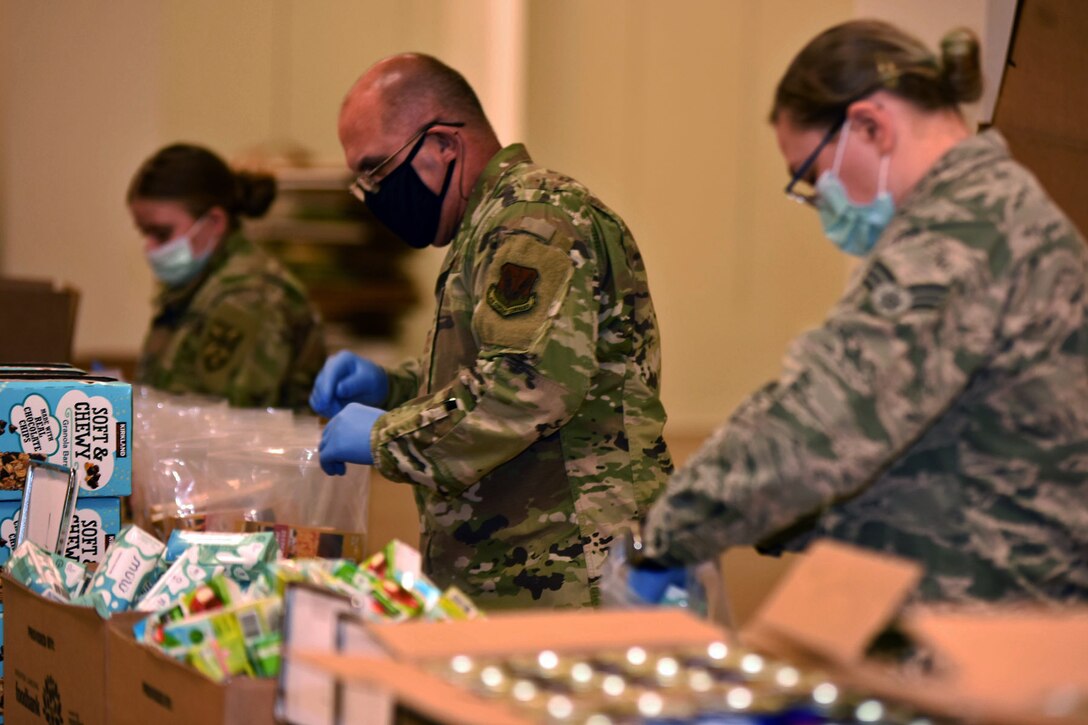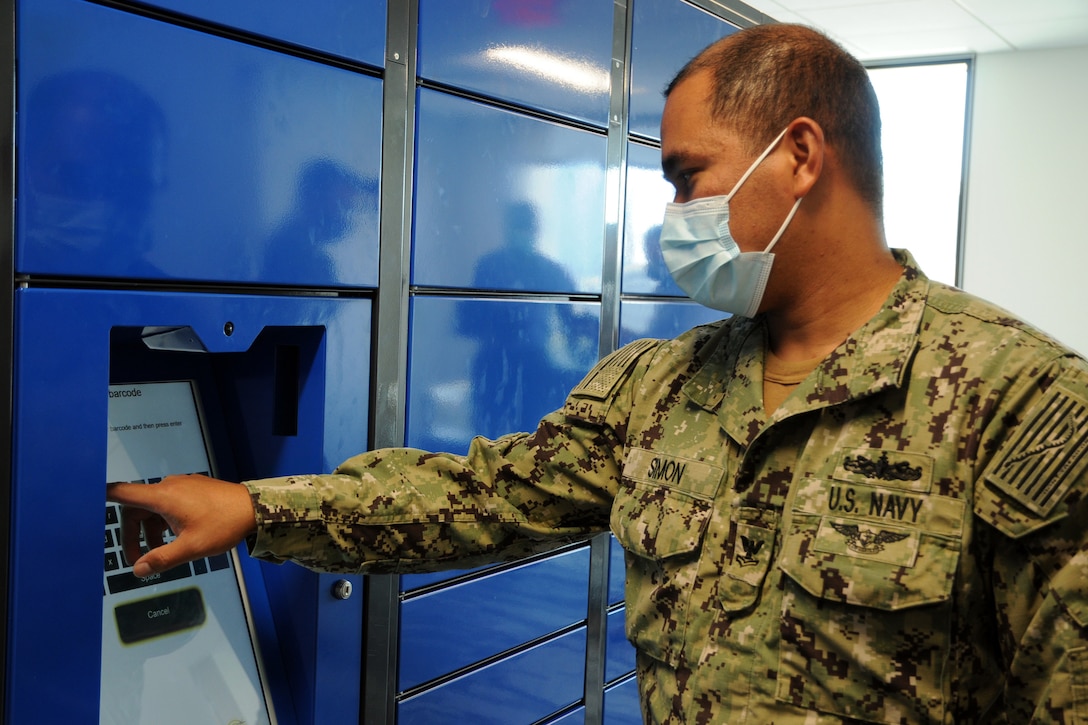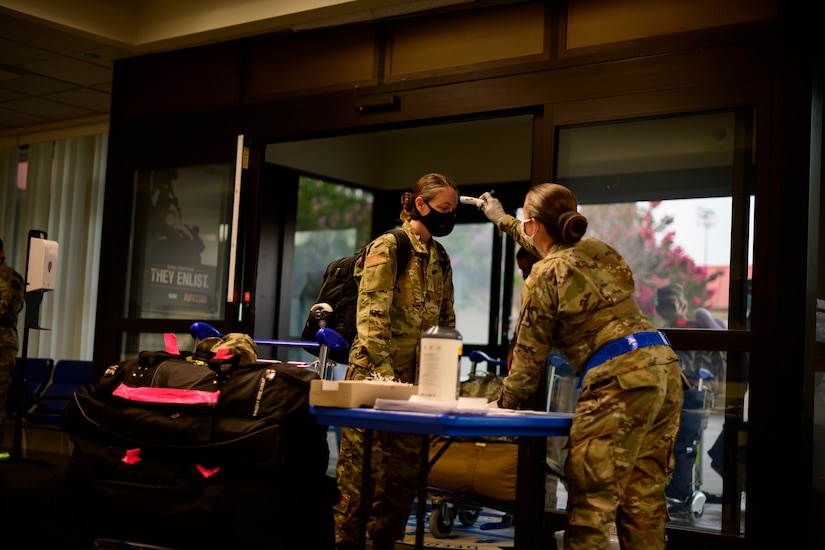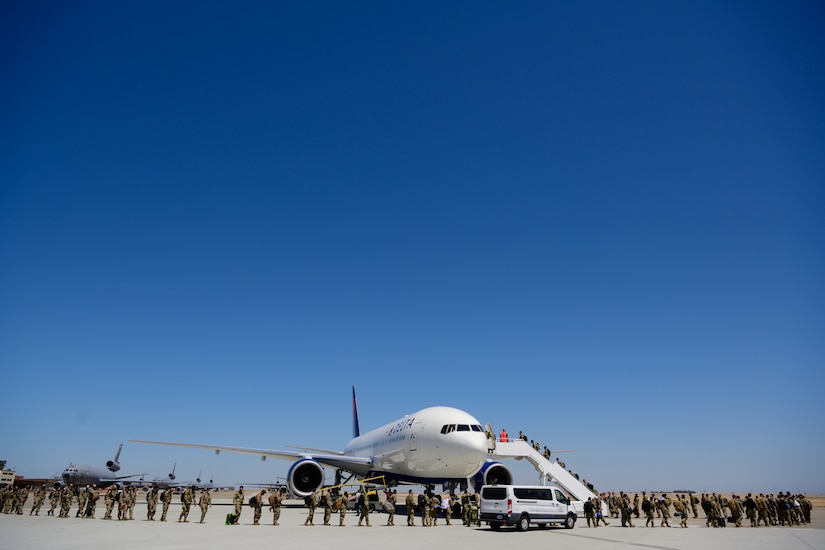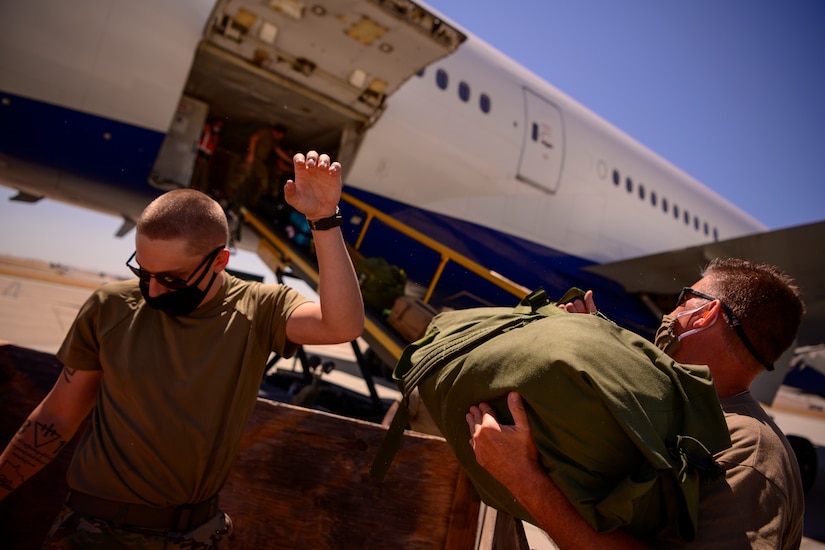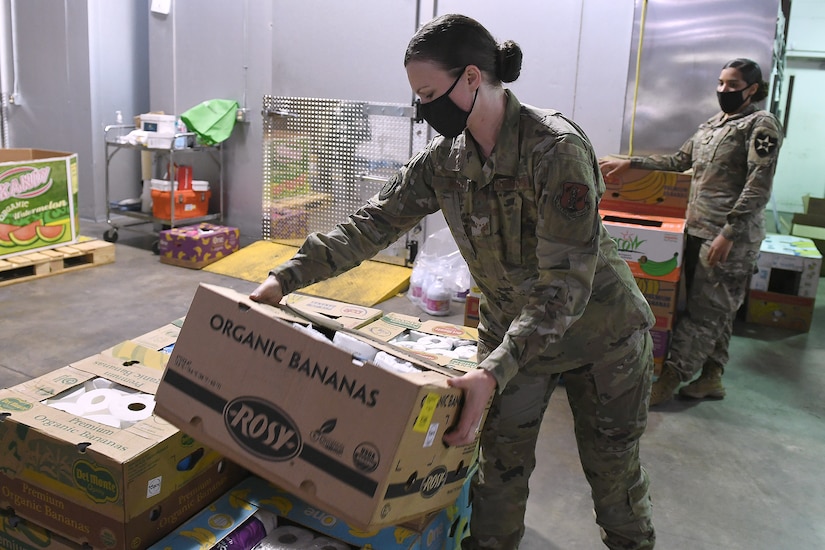Oct. 13, 2020
Army Secretary Ryan D. McCarthy; Army Chief of Staff
General James C. McConville; Sergeant Major of the Army Michael A.
Grinston
STAFF: Hi, good morning, ladies and gentlemen.
Thank you all for joining us today here in the room and on the phone.
My name is Colonel Cathy Wilkinson. I'm the Media Relations Director at
Army Public Affairs.
This morning we have our Army senior leaders who will give you an
update on where we stand in the Army as we start our virtual AUSA
meeting. Before we start, a few notes for the group. We've been
checking in people on the phone and also in the room, so I will call on
you. Please wait for me to call before asking a question.
We do have a lot of people on the line today so I do not know if
we're going to get to everyone, so please keep one question and one
follow up so everyone gets a chance. We have 30 minutes. Mr.
Secretary, the floor is yours.
ARMY SECRETARY RYAN D. MCCARTHY: Oh, good morning. Appreciate
everybody for joining us today. The -- the Chief and the SMA and I
really are grateful for the AUSA organization and for our HQDA staff and
Secretary for putting on a -- an event of this magnitude during a
global pandemic, where we're doing a -- a vast number of Zoom calls and
trying to engage with industry, in other groups, and usually we get the
opportunity for thousands of soldiers and civil servants from all over
the world -- get to travel to Washington and it helps us put tremendous
focus and energy on our agenda, to learn from the previous year and how
to focus for the following.
So we're putting a tremendous amount of energy into that, in trying
to make the time and space to allow the Army to get together. We huddle
with Congress, as well, and industry to discuss the way ahead. So
appreciate these efforts, as well as the opportunity for the -- to meet
with the media. I know we usually do it downtown and you get to see a
lot of our efforts and joint work we do with the industry, in
particular.
This week, we have announced a focus on people, as we seek to balance
readiness with other ambitions. We're in transformational change as we
modernize our equipment, our weapons systems, our formations, and the
way we fight in order to maintain deterrence and decisively win in the
future.
People are the foundation of our organization and the last 19 years
of sustained combat operations in Iraq and Afghanistan has taken its
toll. Because of focused leadership, we've pulled ourselves from a
readiness trough of two BCTs at the highest levels of readiness to over
27 BCTs today.
And just as we did with readiness, we must put the same energy and
resources into our people. With the help from Congress and our industry
partners, we're now seeing our 31 signature systems coming online and
modern equipment built around a soldier-centered design is landing
within our soldiers -- in their -- soldiers' reach.
Tough fiscal decisions will be necessary as new equipment lands and
we must rapidly scale our formations. The Chief and I spoke about
Project Convergence last month, which is the Army's path to
transformation. It's led by General Mike Murray of Futures Command and
we just completed the first successful iteration in Arizona.
We're linking the right sensor to the right shooter to generate the
right option, from influence to lethality, by commuting -- computing at
the edge. This has enabled us to reduce the cycle time of five minutes,
from the long range precision fires and assets, to targets in less than
a minute.
Tremendous, tremendous performance last month and we have iterations
that will be coming in the future. So this campaign of learning is
helping us bring the designers and the scientists together with the
soldiers at the edge and it's really compressed the span time for us in
development of our weapons systems.
So as you can see, we're transforming in everything from our systems
to our culture. And with that, I'd like the Chief to open up for some
comments and we'll take your questions.
ARMY CHIEF OF STAFF GENERAL JAMES C. MCCONVILLE: Well, thank you,
Mr. Secretary, and first of all, I'd just like you to know I've been
screened and tested multiple times over the -- the last two weeks. I
was tested this morning and all negative and I've been cleared by the
docs to come back in, so it's great to be with you all today -- and it
-- no positive tests, all negative all the way through, and -- and --
and the most intensive testing. So -- but -- but our -- out -- out of
an abundance of caution, we did quarantine for a couple of days and --
and -- and met what CDC to -- and we have cleared this morning.
So -- and with that, every day is a great day to be United States
Army because we serve with the world's greatest soldiers. And today is a
particularly great day because we kicked off this year's AUSA annual
meeting, which is very -- a very special time for us, and I want to
thank you all for being here.
The Army is people, and that's why our people -- that's why "people
first" has always been our philosophy, and now, as the secretary said,
people is also our number-one priority. And for people, we are
transforming how we manage talent in our Army. We're in a war for
talent. We published the Army People Strategy, and we're rolling out
the implementation plans for how we acquire, retain, develop and employ
all of our people, to include our soldiers of all components and our
civilians.
We've launched Project Inclusion. It's our effort to ensure we have
an organization that is truly inclusive and everyone feels like a valued
member of the team. And we continue -- continue to aggressively
improve our five quality-of-life efforts: housing, health care,
childcare, spouse employment and PCS moves. Another way is we are
prioritizing people is by implementing the Regionally-Aligned Readiness
and Modernization Model, or as we call it, ReARMM, to balance the
operation tempo of our forces. We are looking at ways to reduce
requirements, enable leaders the additional time to invest in their
people at the lowest levels, and we are changing policies to reinforce
our focus on people. And we take care of our people, we'll meet our
readiness and modernization priorities, and we take care of our people,
we'll have a stronger and more committed force.
We are moving away, as secretary, from incremental improvements and
modernization in order to meet the challenges we face in the great power
competition environment we live in today. The time is now for
transformational change. We're excited to share with you over these
next few days how the Army is going to transform to meet our future
challenges.
I'm also excited about the opening of the National Museum of the
United States Army, scheduled for Veterans Day, the 11th of November
this year. It's an amazing facilitary -- it's an amazing facility, and
shares the history of our Army through the artifacts and stories of the
soldiers that have served. I hope you all get a chance to see it.
Thanks again for being here.
STAFF: Okay, first question is on the phone. Lita, please, A.P.
Q: Hi, good morning. First question for the chief, and on -- I'll
-- I'll follow up, too, on Secretary McCarthy. Chief, can you give us a
little bit more detail on some of the things that you all are doing --
going to be doing about reducing deployments and other specific
changes? How -- have you made a decision on the reduction in deployment
times? Have you talked to other COCOMs on anything about it?
And my follow-up to the secretary: Can you just give us a sense of
whether or not there have been any agreements made with other law
enforcement agencies about them wearing military uniforms in the event
of other unrest and other events, particularly surrounding the election
and (inaudible) --thank you.
GEN. MCCONVILLE: Yeah, yes, well -- well Lita you know, on -- on the
-- as far as the -- the -- the new model that we're working under, we
-- you know, we -- our -- our soldiers have been highly-deployed over
the last 19 years and done an absolutely fabulous job in conflicts,
really, through the Middle East in -- in support of other COCOM
commanders. And what we realized as we've surveyed the force, that the
OPTEMPO is still extremely high, even as the numbers of our forces in --
in combat have come down. So we're taking a look at the rotational
deployments. We're working with the COCOM commanders to see how we can
accomplish the mission in -- in innovative ways, and -- and we're going
to see that coming out over the -- the next two years.
The second piece of that is -- is how we are training and preparing
our forces for the rotational deployments. There's things that we can
do when they're actually forward-deployed, whether it's gunnery or it's a
combat-training-like scenario that allows us to reduce the OPTEMPO on
our units, and the intent is to give more time back to our sergeants at
the lower levels so they have chances to build cohesive teams of
highly-trained, disciplined and fit soldiers at the squad, platoon and
company level. That is the foundation of our Army. It's the foundation
of everything we do, and we just want to give our junior leaders that
opportunity to do that.
MR. MCCARTHY: Lita, with respect to your question, I know Secretary
Esper has had discussions with Secretary Wolf related to the -- the
uniforms because of the -- the concern of creating confusion. I don't
know where those discussions are at present, but we can follow up or --
or get the best read on the situation from OSD. Okay?
STAFF: Okay. Ryan Browne, CNN.
Q: Well, thank you for -- for doing this. General McConville, first
to you. You -- thank you for letting us know about the self-quarantine
process. Are the rest of the joint chiefs also -- have their
self-quarantines also come to an end? Are you -- are you tracking that?
GEN. MCCONVILLE: Well, I think -- I'm -- I'm not going to speak for
the other members. Each one, depending on the advice of their doctors,
where they've been and -- and -- is -- is executing CDC guidelines, so I
-- I'd -- I'd defer those questions to them. But for -- for my own, so
I'll be glad to have from my standpoint. Been tested multiple times
during all the -- all the events; very, very careful on, you know,
wearing a mask, using the six feet, washing the hands. I -- I actually
personally test myself five days -- five times a day with the
temperatures and all this type things. We take it very, very seriously,
but at the same time, as leaders there's things that we have to do in
person. We have to get out there, whether it was going to New York City
or going to Washington state or going to our combat training centers
that we -- where we have soldiers. We have to be able to operate in
this environment. So we -- we take the threat very seriously and we use
the mechanisms that are in place, and so far, that has worked out for
us.
Q: Thank you, General. And -- and Mr. Secretary, to you. In your
unique role with the D.C. National Guard, do you anticipate any role for
the Guard being played in the upcoming election, securing anything or
having any kind of role, potentially?
MR. MCCARTHY: There have been no requests from other agencies to
support at this time, but we're always available to support, whether
it's Metro P.D. or other federal agencies.
STAFF: Okay, on the phone Defense News, Jen.
Q: Hi, yes. Secretary McCarthy, you told me recently that, you
know, if -- if (inaudible) it's the -- a lower top line for a budget
future, that one thing you will not sacrifice is quality of life for our
soldiers and their families. And you said that -- that you were going
to make some announcements regarding some new efforts related to that.
Is that the ReARMM strategy, or are there some other things that you
plan to be announcing at AUSA? Can you just give me more of a rundown
of what those things might be?
MR. MCCARTHY: In the next, I think, day or two we're going to talk
about housing and -- and some moves that we're going to make with
respect to that.
With respect to ReARMM you know, I'll defer to the chief. But that
-- that'll help create more predictability in the system, whether we're
communicating with the Office of the Secretary of Defense and combatant
commanders, as well as internally, to -- to our formations. But the --
the five quality-of-life initiatives that we laid out over a year ago
we're going to talk about that and some of the substantial moves we're
going to make in the coming months to continue to put more energy
against that and give the quality of life to our men and women that they
deserve. Chief, anyone have --
GEN. MCCONVILLE: I think it's, you know, very, very important,
you'll see the resources starting to align over the next couple years
with the quality of life initiatives.
You know, we enlist soldiers, but we re-enlist families and we had a
very, very good year this year on retention. We want to keep that up,
we want to compete for the talent of these great soldiers,
noncommissioned officers, warrant officers and leaders we have. And in
order to do that, we have to provide a good quality of life for them.
STAFF: Okay, here in the room, Lucas?
Q: Lucas Tomlinson from Fox News.
Gentlemen, do you have any plans to have any active duty military
police units train or begin training to handle any election security or
any potential unrest in the weeks ahead?
MR. MCCARTHY: You mean specific plans to specific cities --
Q: Are there any -- yeah, are there any active duty military police
units that are in training or plans to begin training for potential
deployment in case there's unrest in the weeks to come around the
election?
MR. MCCARTHY: I don't think we have anything at present.
GEN. MCCONVILLE: No. I mean, there's no -- there's been no planning
guidance given out from the Department of the Army directing any
military police units to begin training for any situation -- but our --
you know, as a -- you know, our soldiers and our units are always
prepared in training to conduct their missions.
But if the question is, has there been specific guidance given from us? There has not been.
Q: You've had 144 suicides in the U.S. Army among the active duty
force, yet no active duty soldier that I know of has died of the
coronavirus. Which is a bigger threat to the U.S. Army right now? Is
it suicide or the coronavirus?
MR. MCCARTHY: You want -- do you want to start --
GEN. MCCONVILLE: No, I'll just -- I am very concerned about the
behavioral health impacts of COVID and -- it is. It's affecting our
soldiers. And you know, when you're the chief of staff, you're the
secretary, you're concerned about what is affecting your soldiers. And
suicides is affecting our soldiers, that's why it's one of our top three
priorities when it comes to things that we have commanders getting
after.
And you know, some of the scientists have said they've not been able
to show causation between COVID and suicide, but I would argue at least
my sense is, it is having an effect because it disconnects people. And
when we look at, you know, the after-action reports of soldiers that
have died of suicide, it tends to be situations where relationships have
gone bad, where they start to feel that they don't belong, that they're
a burden.
And you know, one of the initiatives that we have is this -- this
give time back to our junior leaders so they can build these cohesive
teams where everyone feels that they're part of the team. And when
there's an issue, they know who to go to.
And you know, you've all seen this with COVID, you know, especially
during the beginning part, people were disconnected. You know, the
connection might only be a text between a leader, and that's why in some
ways, we thought it was very, very important to get back to training
our soldiers, bringing teams back together so they could take care of
each other.
I don't know, sergeant major, did you want to add to -- talk about that with This Is My Squad?
SERGEANT MAJOR OF THE ARMY MICHAEL A. GRINSTON: Yeah.
SGT. MAJ. GRINSTON: Yeah, this -- you know, probably about four
months ago, we talked about the social connection and how do we do
this. And when I think of This Is My Squad, it's ownership, it's
culture, it's positive. But some of that needs to be, you know, active.
What I said was, at some point in time, I can go through my kids, you
know, they like to text before they'll do a FaceTime. If you call
them, they won't answer the phone. You text, they'll immediately
answer. So actually, that's how important it was to stay connected.
Because of some of the behavioral health issues we're seeing.
So I actually said, we should go, if you can't be next to each other,
go with FaceTime first so you can still see the person, you can still
see reaction. And then zoom in that camera. And then the second one is
a voice, so you can hear voice. And then the last is something where
you can't see anybody, a text.
So I actually put out a PACE plan because we were concerned about some of the behavioral health issues.
Q: Mr. Secretary, do you blame in part the lockdowns for this rise in suicide?
MR. MCCARTHY: I don't know if I can categorically say that. We're
concerned about the isolation, and that's why we're trying to find
effective ways to communicate with each other.
STAFF: Okay, on the phone, Matt Cox, Military.com?
Q: Good morning. Secretary McCarthy, could you talk a little bit
more about pursing options for brigade combat, are brigades, combat
training centers, you know that are mixed -- rotations that are mixed,
you know, of battalion command post exercises, light and heavy rotations
that you talked about in your comments earlier?
MR. MCCARTHY: Yeah, I think it's probably far more effective if the
chief comments on that. This is respect to the training strategy.
So, General McConville, you want to weigh in there --
(CROSSTALK)
GEN. MCCONVILLE: Yeah, I think, again, our combat training centers
are the gold standard for preparing our organizations for large-scale
ground combat operations, especially in this time of great power
competition where we know that we will be contested in every domain that
we're going to operate in.
So the combat training rotations you see today are very different
than you may have seen four or five, six years ago that were focused
more on counterinsurgency and counterterrorism. And you know, and
that's why it was very important that we -- we stood them up.
So we are conducting full combat training center rotations, we had
1/34 the National Guard went out there and did a great rotation. We
just had the 1st -- we have the 1st Infantry Division doing even a
division-level operation out at the combat training center.
And at JRTC, we've had the security force assistant brigade out
there, we've had two brigades from the 101st Airborne Division, and now
we have the 2nd Brigade of the 25th Infantry with companies from
Indonesia and Thailand because, you know, the partnerships is extremely
important when we're conducting this training.
But these training events are designed to train the battalion and the
brigade in large-scale ground combat operations, and -- and they're
doing a fabulous job of working these rotations with the ever-present
threat of COVID, which has made these a lot more challenging.
STAFF: In the room, Tara Copp, McClatchy?
(CROSSTALK)
MATT COX: Just as a quick follow-up, so there is no plan to change
these rotations, brigade rotations from what they are now to
smaller-scale for battalion commanders?
(CROSSTALK)
GEN. MCCONVILLE: No, no. Absolutely -- no, there's not. I mean,
the focus -- you know, one of the -- you know, a great lesson learned
is, it's really where we get the -- the field training exercises or the
gunnery type events.
I mean, what's not going to change is you know, the training that
we're giving to our soldiers, our squads, our platoons and companies.
And then -- I mean, that's where the heavy focus is on the training
strategy. And then at battalion and brigade, you get that training at
the combat training center.
It doesn't mean that you won't get that at home station, it just
means that if there's a time constraint, what we're telling commanders
is we want you to phone -- focus on foundational readiness, and
foundational readiness is at this soldier, squad, platoon and company
level, and make sure that we have these cohesive teams at that level
that are highly trained, they're disciplined and they're fit, and then
they -- they go on to the combat training centers and they do extremely
well.
We saw this -- a great example was the 1/34 ABCT out of Minnesota and
came -- it -- it -- it went to the National Training Center during --
kind of right after, you know, the peak of COVID. Those soldiers were
involved in COVID, they were also involved in some of the civil
unrest-type operations, and they came in, trained up to the platoon
level. They just didn't have time to do much training after that.
But because they had a strong foundation, they were able to really do
a great job out there and they quickly picked up on those other skill
sets as -- as they went forward. Ideally, we'd like to have them
trained all the way up but what we're doing is giving instructions to
the commanders -- make sure that you have your soldiers trained, make
sure your squads, platoons, companies -- in some of the higher level
training you may be able to do in simulation, you may be able to do in
fire control exercises, but you've got to give time to the junior
soldiers or junior leaders for the chance to develop their cohesive
teams at the lowest level.
Oh, Sergeant Major, you want to comment on that?
SGT. MAJ. GRINSTON: Yeah, I still think it's extremely valuable, for
individual soldier readiness, to deploy to a JRTC or a National
Training Center or even over to Hohehfels as you do those -- all of the
things about how do you pack your bags, how do you make sure all of your
family care plans are in order?
So these large scale events, although we build the base of the
foundation still has individual readiness and prepares us for what we
need to do, when you're at your home station, you're still at your home
station. You know that road, you know that -- where that road goes but
when you go to NTC, you do a full movement.
And all of the individual tasks are extremely important, that's why I
think those events, on a large scale, are still important for us to do,
even though we may start with a foundational base but do a brigade
movement over to JRTC, NTC -- is still extremely valuable.
GEN. MCCONVILLE: Yeah, I just want to make sure -- maybe it'll -- as
we answer the questions, I heard -- there's no intent to reduce Combat
Training Center rotations for our units. That's not, you know, what
we're discussing. We're discussing -- is what the prerequisites are to
actually go to a Combat Training Center and how they fit into the
rotational model.
STAFF: Tara?
Q: Oh, (inaudible) question. For SMA Grinston, for many enlisted,
this is probably the first election they're going to vote in, and there
have been a lot of questions raised in the public realm about the
reliability of a mail-in ballot. I wanted to ask what has been done to
encourage particularly enlisted that are now assigned to a base and not
in their home state, to, you know, register, to get their absentee
mail-in ballots sent in?
And then secondly, for Secretary McCarthy, I think the last time we
were all in the room together was when everybody was responding to the
June 1st protest -- maybe, if -- might've had one in between then -- and
I wanted to know what is the status of the 15-6 investigation into
these National Guard helicopters and why that report hasn't been
released yet, and if there's an intention to release it before the
election or hold it until after?
SGT. MAJ. GRINSTON: Okay, thank you for the question. Yeah, I would
begin as I've been in the Army 33 years, so I've had many opportunities
to do a mail-in ballot. And since I've been in the Army, we've had
voting assistance officers in every S1, G1 that I've been in.
So we do training, they -- you go to the G1, they say "here's how we
can help you." You can do the website but we also do specific trailing
-- training so that a soldier has someone to go to in their unit to help
them when they want to do a mail-in ballot, if they can't, you know, do
it all on their own.
So this is no different than I've had since I've been in the Army,
mail-in ballots have been what I've used almost every time that an
election comes up, cause I've been in the Army, I've not been in my home
state for a very long time.
So this is not new, we have voting assistance officers that will
guide them through and help them out in every S1, which is the personnel
action center for our soldiers, and this is -- this is common, we've
done this for a long time.
Q: This may not have buckled up to you but are you hearing any
questions about "will it be reliable, will it -- this be a reliable way
to get my vote sent in" for folks that haven't been doing this as long?
SGT. MAJ. GRINSTON: I -- I haven't had any questions.
MR. MCCARTHY: Well, the Army's completed its portion of the
Inspector General investigation. The DOD IG has -- they review these in
these cases. It's currently with the DOD IG, it's my understanding
that it's imminent and it'll be released when it's completed.
Q: Do you know -- is there any expectation that it's -- should be released before the election, just in case there --
MR. MCCARTHY: That's at their discretion.
Q: (Inaudible), okay.
STAFF: Okay. And last question on the phone -- Sydney Freedberg, Breaking Defense? Okay, in the room. Ma'am?
Q: Hello, Sylvie from AFP. You said earlier that if the D.C.
National Guard is requested for -- after the election, you -- you are
always available. Do you have any plan to avoid being dragged on the
political scene, as it happened in June, for General Milley? Do you
have any plan to -- how to handle that?
MR. MCCARTHY: I wouldn't characterize us being dragged onto the
scene. The protests became very violent on Sunday evening, in
particular, of that week and it was necessary to bring in the support to
help local law enforcement and federal law enforcement officials, due
to the tremendous damage, police officers and Guardsmen being injured
over the course of that evening, in particular.
We support law enforcement, whether that is at the federal or state
and local levels. We don't police American streets. So we -- in the --
in the instance of National Guardsmen being called up, that are
uniquely trained and set for those types of operations, if we're called
upon, we will ask and support that, to protect federal property and
support law enforcement.
STAFF: Okay, gentlemen, we are out of time. Do you have any closing comments?
MR. MCCARTHY: I'd defer to my colleagues, as well, if they'd like to
but it's going to be tough for us in AUSA this week to communicate in
this environment. We have these chat rooms that have been developed.
We're going to have the screens in our offices to do follow ups. We are
going to make some additional announcements on initiatives that we have
in place. We're going to do the best that we can to communicate.
So there will be other opportunities for the media, I presume, and
we'll try to make ourselves available accordingly but thanks for taking
the time. Chief?
GEN. MCCONVILLE: No, I just -- I think everyone knows it's been a
challenging year, with a -- with a whole bunch of things going on around
the world, and then with COVID and wildfires and hurricanes and some of
the social unrest.
I just want to say I'm just incredibly proud of our soldiers, from
the National Guard, from the Reserves, from the regular Army, our
families who have worked their way through multiple moves during this
environment, through our Department of the Army civilians, and to our
soldiers for life, our retirees and veterans who have, you know, stood
in full support. And we just appreciate the American people's support
during these challenging times. I cannot be more proud of our people in
the Army.
SGT. MAJ. GRINSTON: I guess it's like pile-on. You know, what we've
gone through in a year has really been unprecedented. And most of the
time I say, not everybody gets to be the Sergeant Major of the Army
during a global pandemic.
But look at all the things that have happened throughout the years,
really proud of how our soldiers have really, you know, gone through
this year. It's unprecedented, over a hundred years. And then threw in
the killing of Soleimani, then you threw in a COVID, then you have
civil unrest.
And everything that we've done, our soldiers have been -- they go to
-- to help in some of the pandemic. And our families have been there to
support them, and that's all COMPOs all the way, and it's
unbelievable. And I'm extremely proud of all our soldiers and our
families.
STAFF: Okay, thank you all very much for joining us today.
